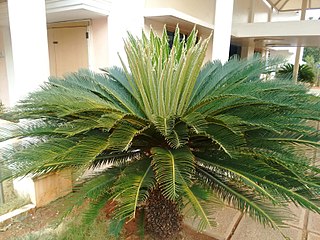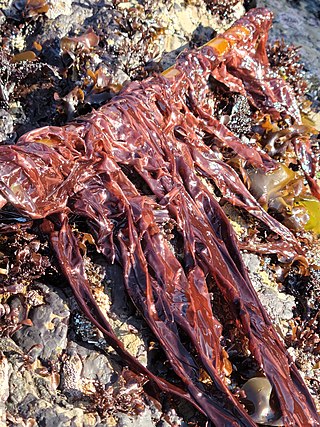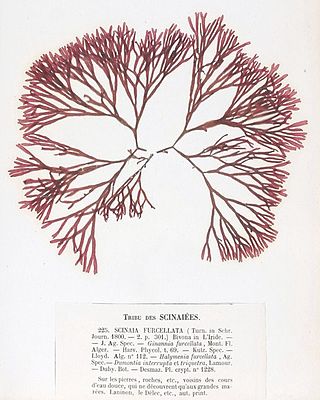
Conodonts are an extinct group of eel-looking agnathan (jawless) vertebrates, classified in the class Conodonta. For many years, they were known only from fossils of their spiky oral elements, which are usually found in isolation and are now called conodont elements, while knowledge about soft tissues remains limited. A resilient group of prehistoric fish, conodonts existed in the world's oceans for over 300 million years, from the Cambrian to the beginning of the Jurassic. Due to their cosmopolitan distribution, conodont elements are widely used as index fossils, fossils used to define and identify geological periods.

Kikuchi disease was described in 1972 in Japan. It is also known as histiocytic necrotizing lymphadenitis, Kikuchi necrotizing lymphadenitis, phagocytic necrotizing lymphadenitis, subacute necrotizing lymphadenitis, and necrotizing lymphadenitis. Kikuchi disease occurs sporadically in people with no family history of the condition.

The great snipe is a small stocky wader in the genus Gallinago. This bird's breeding habitat is marshes and wet meadows with short vegetation in north-eastern Europe, including north-western Russia. Great snipes are migratory, wintering in Africa. The European breeding population is in steep decline.

Cycas is a genus of cycad, and the only genus in the family Cycadaceae with all other genera of cycad being divided between the Stangeriaceae and Zamiaceae families. Cycas circinalis, a species endemic to India, was the first cycad species to be described in western literature, and is the type species of the genus.

Alvinocarididae is a family of shrimp, originally described by M. L. Christoffersen in 1986 from samples collected by DSV Alvin, from which they derive their name. Shrimp of the family Alvinocarididae generally inhabit deep sea hydrothermal vent regions, and hydrocarbon cold seep environments. Carotenoid pigment has been found in their bodies. The family Alvinocarididae comprises 7 extant genera.
Pyropia columbina, Southern laver, karengo in the Māori language and luche in the Spanish language, is a species of edible seaweed traditionally harvested by South Island Māori in New Zealand and Chilote people in Chile. It is closely related to Japanese Nori and Welsh laverbread.

Hystricomorpha is a term referring to families and orders of rodents which has had many definitions throughout its history. In the broadest sense, it refers to any rodent with a hystricomorphous zygomasseteric system. This includes the Hystricognathi, Ctenodactylidae, Anomaluridae, and Pedetidae. Molecular and morphological results suggest the inclusion of the Anomaluridae and Pedetidae in Hystricomorpha may be suspect. Based on Carleton & Musser 2005, these two families are discussed here as representing a distinct suborder Anomaluromorpha.

Rinko Kikuchi is a Japanese actress. She was the first Japanese actress to be nominated for an Academy Award in 50 years, for her work in Babel (2006). Kikuchi's other notable films include Norwegian Wood (2010), which screened in competition at the 67th Venice Film Festival and Guillermo del Toro's science fiction action film Pacific Rim (2013). For her role in the drama film Kumiko, the Treasure Hunter (2014), Kikuchi received an Independent Spirit Award nomination for Best Female Lead. She is currently seen in the HBO Max crime drama series Tokyo Vice.

Octocorallia is a class of Anthozoa comprising over 3,000 species of marine organisms formed of colonial polyps with 8-fold symmetry. It includes the blue coral, soft corals, sea pens, and gorgonians within three orders: Alcyonacea, Helioporacea, and Pennatulacea. These organisms have an internal skeleton secreted by mesoglea and polyps with eight tentacles and eight mesentaries. As with all Cnidarians these organisms have a complex life cycle including a motile phase when they are considered plankton and later characteristic sessile phase.

Saccharina is a genus of 24 species of Phaeophyceae. It is found in the north Atlantic Ocean and the northern Pacific Ocean at depths from 8 m to 30 m.

Axin-1 is a protein that in humans is encoded by the AXIN1 gene.
Harold John Finlay was a New Zealand palaeontologist and conchologist.

Wildemania is a genus of foliose red algae of the family Bangiaceae.

Takht-i Sangin is an archaeological site located near the confluence of the Vakhsh and Panj rivers, the source of the Amu Darya, in southern Tajikistan. During the Hellenistic period it was a city in the Greco-Bactrian kingdom with a large temple dedicated to the Oxus, which remained in use in the following Kushan period, until the third century AD. The site may have been the source of the Oxus Treasure.
Bangia is an extant genus of division Rhodophyta that grows in marine or freshwater habitats. Bangia has small thalli with rapid growth and high reproductive output, and exhibits behavior characteristic of r-selected species. The plants are attached by down-growing rhizoids, usually in dense purple-black to rust-colored clumps. The chloroplasts of Bangia, like others in the division Rhodophyta, contain chlorophyll a and sometimes chlorophyll d, as well as accessory pigments such as phycobilin pigments and xanthophylls. Depending on the relative proportions of these pigments and the light conditions, the overall color of the plant can range from green to red to purple to grey; however, the red pigment, phycoerythrin, is usually dominant.

Bangiales is an order of multicellular red algae of the class Bangiophyceae containing the families Bangiaceae, Granufilaceae, and possibly the extinct genus Rafatazmia with one species, Rafatazmia chitrakootensis. They are one of the oldest eukaryotic organisms, possibly dating back to 1.6 billion years old. Many species are used today as food in different cultures worldwide. Their sizes range from microscopic (Bangiomorpha) to up to two meters long. Many of its species are affected by Pythium porphyrae, a parasitic oomycete. Similar to many other species of red algae, they reproduce both asexually and sexually. They can be both filamentous or foliose, and are found worldwide.

Moa Kikuchi, known by her stage name Moametal, is a Japanese musician, singer, and dancer. She is represented by the talent agency Amuse, Inc. She is a member of the kawaii metal band Babymetal and a former member of the idol group Sakura Gakuin.

Pyropia is a genus of red algae in the family Bangiaceae. It is found around the world in intertidal zones and shallow water. The genus has folding frond-like blades which are either red, brown or green. Some Pyropia species are used to create nori, and are thus important subjects for aquaculture.

Bangiaceae is a family of red algae in the order Bangiales. It contains laver, used to make laverbread, and various species in the genus of Pyropia are used to make nori.

Scinaiaceae is a family of red algae (Rhodophyta) in the order Nemaliales.
















